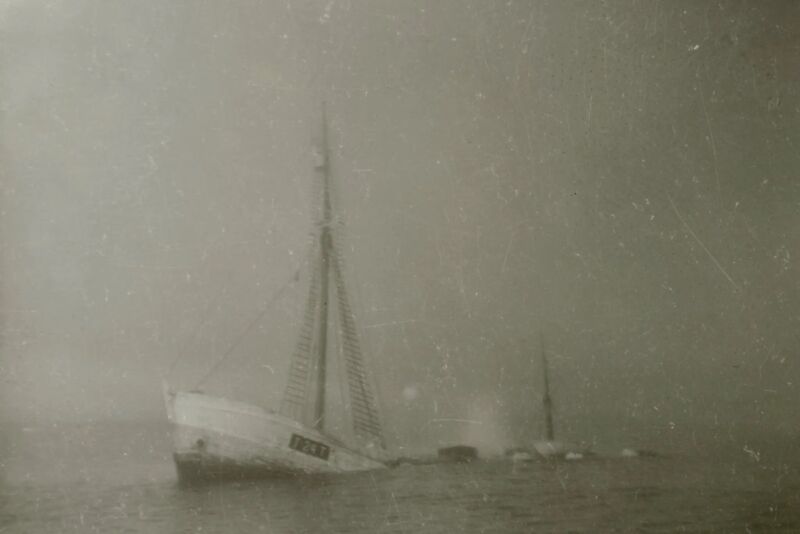A ship called Quest —
“His final voyage kind of ended that Heroic Age of Exploration.”

Enlarge / Ernest Shackleton died on board the Quest in 1922. Forty years later, the ship sank off Canada’s Atlantic Coast.
Tore Topp/Royal Canadian Geographical Society
Famed polar explorer Ernest Shackleton famously defied the odds to survive the sinking of his ship, Endurance, which became trapped in sea ice in 1914. His luck ran out on his follow-up expedition; he died unexpectedly of a heart attack in 1922 on board a ship called Quest. The ship survived that expedition and sailed for another 40 years, eventually sinking in 1962 after its hull was pierced by ice on a seal-hunting run. Shipwreck hunters have now located the remains of the converted Norwegian sealer in the Labrador Sea, off the coast of Newfoundland, Canada. The wreckage of Endurance was found in pristine condition in 2022 at the bottom of the Weddell Sea.
The Quest expedition’s relatively minor accomplishments might lack the nail-biting drama of the Endurance saga, but the wreck is nonetheless historically significant. “His final voyage kind of ended that Heroic Age of Exploration, of polar exploration, certainly in the south,” renowned shipwreck hunter David Mearns told the BBC. “Afterwards, it was what you would call the scientific age. In the pantheon of polar ships, Quest is definitely an icon.”
As previously reported, Endurance set sail from Plymouth, Massachusetts, on August 6, 1914, with Shackleton joining his crew in Buenos Aires, Argentina. By January 1915, the ship had become hopelessly locked in sea ice, unable to continue its voyage. For 10 months, the crew endured the freezing conditions, waiting for the ice to break up. The ship’s structure remained intact, but by October 25, Shackleton realized Endurance was doomed. He and his men opted to camp out on the ice some two miles (3.2 km) away, taking as many supplies as they could with them.
Compacted ice and snow continued to fill the ship until a pressure wave hit on November 13, crushing the bow and splitting the main mast—all of which was captured on camera by crew photographer Frank Hurley. Another pressure wave hit in late afternoon November 21, lifting the ship’s stern. The ice floes parted just long enough for Endurance to finally sink into the ocean, before closing again to erase any trace of the wreckage.
When the sea ice finally disintegrated in April 1916, the crew launched lifeboats and managed to reach Elephant Island five days later. Shackleton and five of his men set off for South Georgia the next month to get help—a treacherous 720-mile journey by open boat. A storm blew them off course, and they ended up landing on the unoccupied southern shore. So Shackleton left three men behind while he and a companion navigated dangerous mountain terrain to reach the whaling station at Stromness on May 2. A relief ship collected the other three men and finally arrived back on Elephant Island in August. Miraculously, Shackleton’s entire crew was still alive.
Enlarge / This is the stern of the good ship Endurance, which sank off the coast of Antarctica in 1915 after being crushed by pack ice. An expedition located the shipwreck in pristine condition in 2022 after nearly 107 years.
Falklands Maritime Heritage Trust/NatGeo
Shackleton’s last voyage
By the time Shackleton got back to England, the country was embroiled in World War I, and many of his men enlisted. Shackleton was considered too old for active service. He was also deeply in debt from the Endurance expedition, earning a living on the lecture circuit. But he still dreamed of making another expedition to the Arctic Ocean north of Alaska to explore the Beaufort Sea. He got seed money (and eventually full funding) from an old school chum, John Quillier Rowett. Shackleton purchased a wooden Norwegian whaler, Foca I, which his wife Emily renamed Quest.